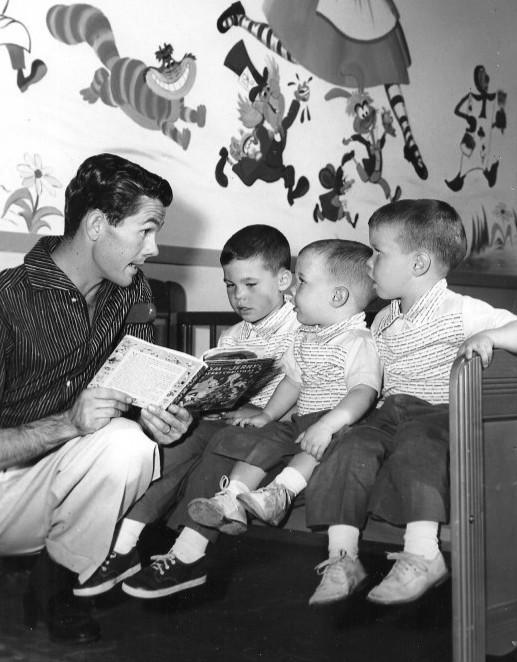E.D. Hirsch, most famous for authoring the 1987 best-seller Cultural Literacy: What Every American Needs to Know, is due for a reconsideration, the New York Times recently supposed, in a story that opens as if the retired scholar’s field of study was the sweet science: “A generation after he was squarely pummeled as elitist, antiquated and narrow-minded, the education theorist E. D. Hirsch Jr. is being dragged back into the ring at the age of 85—this time for a chance at redemption.”
Hirsch was the chair of the English department at the University of Virginia when he first forwarded his theory of the K-12 education—a radical plan “to restore the teaching of fact and information in schools,” in Christopher Hitchens’ words. The basic idea was that schools can best prepare children for the world by teaching them how it works—history and ideas and stuff. The philosophy is in sync with the ascendant Common Core, a set of learning standards adopted by a majority of the 50 states, not without a fuss from parents and teachers variously opposed to its emphasis on testing to its failure to “recognize the individual potential” of each little runny-nosed sunbeam.
Hirsch’s educational principles can withstand a reasonable debate, if such events still exist. Indeed, most suppose that Cultural Literary encouraged fits of rhetorical pugilism the first time around largely because Hirsch happened to wade into the Reagan-era “culture wars”; in the wrong place at the wrong time, he was framed as some kind of Tory. But also the book owes its fame and notoriety to its epic appendix, which burst. In the original edition, this was a list of “5,000 essential names, phrases, dates, and concepts,” an alphabetized catalog that described “the information actually possessed by literate Americans.” It is a pretty good collection of nouns—Aaron, Hank; Abandon hope, all ye who enter here; abbreviation; Aberdeen; abolitionism; abominable snowman—and Hirsch’s New Dictionary of Cultural Literary (2002), a reference book extended from its premises, is better yet.
The list remains a valuable object of study—not least because it is both a de facto time capsule capturing a view of what mattered to academics of yesteryear (organized labor, Allen, Woody) and a milepost by which to mark how the terms of cultural literacy have changed. (Sadly, the full thing is not available online, but on Amazon, you can use the “look inside” feature to get a sense of it—or buy a used copy for mere cents.)
This isn’t simply a fun thought experiment. If Hirsch’s ideas are to be debated, then his list is worth picking at and poring over by way of exploring how it might be updated. Further, history suggests that he himself would be interested to know what thinking people think of his thoughts: He originally invited amendments and emendations to his list, and on the basis of reader mail, he tossed in about 300 further terms and removed about 25. (Occam’s razor was among the deletions, for reasons best explained by way of an elaborate hypothesis.)
Is it too bold to suppose that one must now know 10,000 basic things? Obviously, a lot has happened to general knowledge since the book’s publication, not a little of it connected to what now appears to be a lacuna on Hirsch’s list—a gap that developed between International Monetary Fund and interrogative sentence. The Internet is a force of information inflation, and much of the stuff on the list remains relevant, give or take a few relics and some slang terms (pop the question, bite the dust) now fully embedded in mainstream vocabulary. (A few antique entries concern the Cold War; a revised list should tear down eurocommunism to make way for the eurozone. A few others concern bygone intellectual fashions; the kids need to know that the grown-ups have quit pretending to have finished The U.S.A. Trilogy, and we could comfortably drop Dos Passos, John in favor of any of a dozen later novelists.) A 10K list would be roomy enough to accommodate contemporary geopolitics—for Sunni and Shia and Somalia and so on—with room left over to park an SUV, be it a white Ford Bronco bearing Simpson, Orenthal James or a Porsche Cayenne purchased by Soprano, Anthony.
The Cultural Literacy appendix is most badly in need of updating with respect to popular culture. It made room for folk ballads and nursery rhymes and a handful of major mass-mediated landmarks, but it is mostly weird about the pop marketplace. Carson, Rachel is a notable absence, but surely the greater sin is omitting Carson, Johnny—not to mention Ball, Lucille and Murrow, Edward R., or indeed pretty much everything on or about television except for M*A*S*H. And don’t get me started on the idea that an American citizen could count himself sentient without having heard of Citizen Kane. Oh, too late—I’ve gotten started, and who would want to stop?
Tell us in the comments: Which people, places, and thingabobs are newly essential to getting through the newspaper or a dinner party?
